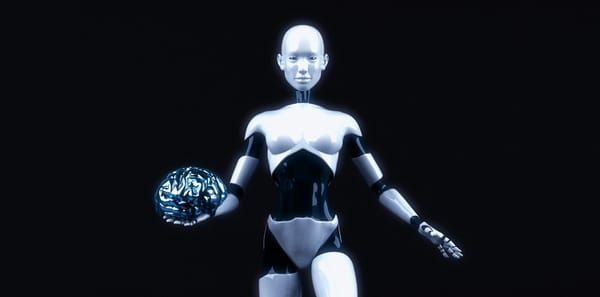How AI-Generated Job Descriptions Can Revolutionize Hiring
A new age in the organizational structure has come. AI already started playing an essential role in recruitment and has the potential to bring even more to its game. In organizational recruitment, job descriptions seem to be just a small aspect of the whole process, but they are not. Job descriptions play a significant role in building a highly productive workforce, and thus they are an important tool.
The Hiring Landscape Today
Today’s hiring landscape is rapidly evolving. Of course, there are various factors that impact this evolution, such as technological advancements, changes in economic conditions, and even candidate expectations, due to changes in the way that some jobs operate.
Currently, there are some trends in the hiring landscape. Some of these are:
· Digital Transformation: The whole hiring landscape is going through a digital transformation. Many aspects of this process are digitalized, with virtual interviews and online evaluations integrated into it. Technology advancements have enabled the automation and streamlining of the hiring process, enhancing its speed and efficiency and improving the candidate experience.
· Remote Work and Flexibility: Remote work has become an essential trend in today’s hiring landscape. It is very common for organizations to offer remote work and flexible work arrangements to their employees and to candidates as well, allowing them to reach a wider talent pool.
· Diversity and Inclusion: Organizations focus on creating a diverse and inclusive workforce. This isn’t just done for ethical reasons but also allows them to foster a positive work environment and embrace innovation within the organization.
· Focus on Skills: The main focus on today’s hiring landscape is an individual’s skills rather than their qualifications. Most organizations assess a candidate’s skills, and it is becoming a very important aspect of the hiring process.
· Focus on Soft Skills: Another thing that organizations have started prioritizing is candidates’ soft skills. These skills play a significant role in teamwork, communication, and adaptability, making candidates with strong emotional intelligence favorites for a job.
In general, today’s hiring landscape characteristics are digital transformation, remote work, flexible work arrangements, inclusivity, and a focus on skills and emotional intelligence.
The Crucial Role of Job Descriptions
Most people believe that job descriptions are just another aspect of the recruitment process. Such thing isn’t true. Job descriptions aren’t just a list that describes a job, but it’s a tool that helps organizations attract the right candidates and top talent, build a diverse and inclusive workforce, and improve the organization’s productivity in the future.
Job descriptions are part of an organization’s success, and investing time in crafting and perfecting them is essential. Well-written and smart job descriptions can bring many benefits to an organization, making them an important strategic tool.
Introducing AI into Job Description Writing
While job descriptions are essential for organizational success, the process of crafting them is costly in both time and resources. To overcome these drawbacks of the traditional method for crafting job descriptions, leveraging AI’s powers is a great solution. AI’s powers are capable of crafting smart job descriptions in an instant and without the need for manual writing. This can really help organizations, and especially their HR departments or recruiter because it saves up a lot of time and effort. Moreover, they can always spend the time saved on the organization’s strategic planning.
Implementing AI in your organization’s recruitment process provides many benefits to its overall success. Let’s see some of the most common ways that AI-crafted job descriptions benefit organizations:
· Language Optimization: Good thing about having AI craft job descriptions is that it collects and analyzes data from a large database. This really helps when crafting job descriptions because AI uses relevant keywords and phrases that make job posting more visible in search engines and, consequently, reach a wider range of candidates.
· Diversity and Inclusion: AI-crafted job descriptions only focus on skills and qualifications needed for the job. As a result, AI mitigates all biased language that job descriptions may contain and make them attractive for candidates with a diverse background.
· Time and Cost Savings: As we said earlier, AI can craft job descriptions in seconds. This saves up a lot of time and resources. Organizations can reallocate the resources and time saved from leveraging AI’s powers and focus more on their strategic initiatives.
· Consistency: Every job description crafted by the AI will have the same language and tone. Usually, when humans manually craft job descriptions, there are differences between them because many people are writing them.
· Data-Driven Crafting: Another benefit of AI’s large, continuously updating database. Each job description, when crafted, contains the newest market and industry trends and asks for candidates with the most needed skills and qualifications. This way, organizations can find well-suited candidates and reduce wasting time on underqualified ones.
Steps to Implement AI in Your Hiring Process
The rapidly advancing technology opens new doors for organizations that can help in various of their processes, but for now, we will be focusing on the hiring process. AI tools are evolving every day and can take organizations to the next level. The thing is, in the modern organizational landscape it’s still in a transformational phase. Organizations that have already started taking the next steps and following this transformation already have gained an important advantage over the others who haven’t.
Note that in order to be part of this transformation, everything should be done smoothly. Let us show you some steps that organizations can follow and make the transition to the AI era right:
· Evaluate Current Needs: Organizations first need to identify which aspects of the hiring process need to be upgraded. They should evaluate which things keep them back and could be better, like improving candidate quality, improving diversity, or reducing time-to-fill.
· Look for the right AI tools: After completing the evaluation, organizations should start researching for the right AI tool that aligns with their needs.
· Employee Training: When implementing AI tools for recruitment, organizations have to prepare their employees in the right way. This doesn’t only mean teaching employees how to use the AI tools but also teaching them about the benefits of leveraging AI’s powers. Furthermore, organizations have to make clear to employees that AI isn’t here to replace them but to augment their skills.
· Collecting and Analyzing Results: This stage is crucial for assessing the AI’s implementation. Organizations should collect and analyze the results of the recruitment process and compare them with the pre-AI results. By doing this, organizations can measure its effectiveness.
Addressing Common Misconceptions about AI in Hiring
During this transformation phase, many people are shaping a wrong image of how things are going to be in the future, leading to some misconceptions. Of course, such thing makes total sense, but now we’re going to address some common misconceptions and set things clear. Let’s dive in:
1. AI will replace humans.
As we said earlier, people need to understand that AI isn’t created to replace humans but to enhance their capabilities. While AI can automate and streamline some processes, the human touch is still needed, especially for supervising and making the final decision.
2. AI-powered hiring is biased.
AI language models are trained by their users. If it’s poorly trained or trained on biased data, then the results will be biased. However, most AI databases include diverse data and include limitations that deter them from using biased language. Don’t forget that human oversight is still needed to check the results and take action to correct biased language if needed.
3. AI is only useful to large organizations.
AI tools are useful for every organization, despite their size. Every organization can benefit from AI and enhance their hiring process.
4. AI removes the human touch from hiring.
As we said earlier, AI tools are helping humans rather than replacing them. Humans are always needed to oversight the AI-crafted job descriptions, make changes if needed, and make the final decision. Furthermore, with the time saved from not having to write a job description manually, HR professionals or recruiters can focus on making strategic decisions.
5. AI doesn’t consider soft skills in job descriptions.
Such a misconception needs to be corrected. AI-crafted job descriptions focus on skills and qualifications for the job and also include every soft skill needed. This contributes to finding candidates that can work better within an organizational environment and be a helpful part of a team.
AI is a valuable tool for organizations, and as time goes by and technology keeps advancing, it is going to be even more important. Organizations that want to keep growing and be even more productive in the future should embrace AI technology and start the transition to the new era. In the hiring process, AI can help every organization in many aspects. It’s a great way of finding candidates that are well-suited for a job and even enhances the candidate experience by accurately explaining every responsibility and expectation. Moreover, it significantly reduces the time and costs needed for crafting job descriptions using traditional methods. All of these prove that leveraging AI’s powers can boost an organization's productivity and help them thrive in the future.




